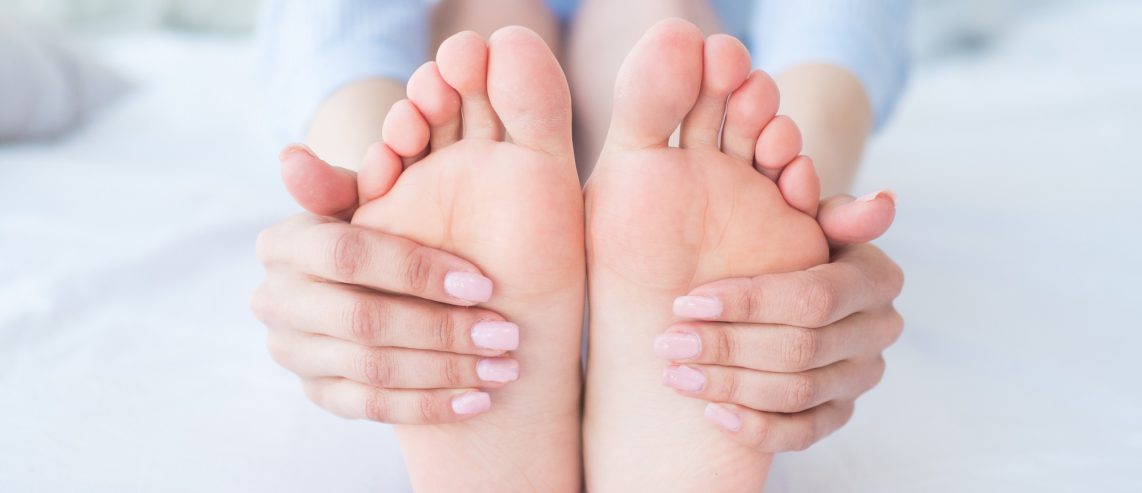One of the biggest recent trends in foot care has been the popularity of foot peels. They became more popular during the COVID-19 pandemic, when salons closed and people couldn’t get pedicures. Food peels are an easy (albeit weird-looking) way to remove rough, dead skin at home — and leave your feet smooth and baby soft.
But are foot peels safe? Here’s what you need to know about this hot new trend — and if it’s right for you.
What Are Foot Peels?
A foot peel is basically a chemical peel for your feet. It involves a one-time application of a gooey mixture containing natural extracts and exfoliating acids. The acids are usually salicylic acid, glycolic acid, or lactic acid.
Dermatologists use similar chemical peels to help diminish fine lines, wrinkles, and age spots on the face, hands, neck, and chest. They also use peels to treat some types of acne, blotchy complexions, and sun-damaged skin.
But instead of fighting signs of aging, a foot peel simply sloughs off dead skin from your feet. And instead of having a treatment in a dermatologist’s office, a foot peel is a do-it-yourself treatment you apply at home.
Never Miss a Beat!
Subscribe to Our HealthBeat Newsletter!
Thank you for subscribing!
You can now select the specific newsletters you'd like to receive.
You are already subscribed.
Subscribe to more newsletters in our email preference center.
Sorry, an error occurred. Please try again later.
Get Healthy Tips Sent to Your Phone!
How Do Foot Peels Work?
In a foot peel, exfoliating acids enter the top layer of skin and break down the bonds that hold skin cells together. A few days after the treatment, bits and pieces (sometimes large swaths) of dead skin flake off your feet.
Foot peels have become popular because they are inexpensive and easy to apply. Here’s how it works:
- Open the package and follow the instructions. Typically, you’ll apply the mixture to your feet and cover with a booty-like plastic mask for about an hour. After you take off the booties, wash your feet gently with water.
- You can soak your feet in water for an hour every night to speed up the exfoliating process, but it’s not necessary.
- Wait several days to a week to see results. In the meantime, don’t rub, pick at, or peel the dead skin. If the skin isn’t quite ready to come off, you can end up with painful sore.
- Dead skin will start peeling off your feet. (It’s best to wear socks through the process so you don’t leave flakes everywhere.)
- Wear sunscreen (at least SPF 30) on your feet if you go out in sandals. Because your feet don’t have the top layer of skin, they’ll be extra-sensitive to UV rays from the sun.
Are Foot Peels Safe?
For most people, foot peels are safe. The skin on your feet is thick (and often calloused) so it’s not as delicate as the skin on your face. The process doesn’t hurt.
Some people shouldn’t use foot peels. You should avoid them if you:
- Have open sores or wounds on your feet.
- Are pregnant.
- Have a history of diabetes.
- Have eczema.
- Have psoriasis.
- Are allergic to any of the ingredients on the label.
- Have athlete’s foot.
Do You Need to See a Doctor to Get a Foot Peel?
You can buy foot peels over the counter at beauty stores, drug stores, and online. You don’t need a prescription to get one.
But if you should experience any problems after using a foot peel, you should see a doctor or a dermatologist. That includes:
- Redness.
- Swelling.
- Itchiness.
- Worsening of any of the above symptoms in direct sunlight.
All of the above symptoms could be signs of an infection.
A foot peel once every few months shouldn’t cause harm. But as with any skin product, it’s always a good idea to consult a doctor before using.
Sources
New York Times, Goodbye, Pedicures. Hello, Peels. Link
American Society for Dermatologic Surgery, Chemical Peels, Link
U.S. National Library of Medicine, Label: Repiel Smart Foot Peeling Perfect Care – salicylic acid patch, Link
National Library of Medicine, Salicylic Acid Topical, Link
American Academy of Dermatology, How to Safely Exfoliate at Home, Link
American Academy of Dermatology, Chemical Peels: Overview, Link
Good Housekeeping, What You Need to Know About the 'Baby Foot' Mask That Makes Your Feet Peel Like a Snake, Link
About Dermatology
The UPMC Department of Dermatology diagnoses, treats, and manages numerous hair, skin, and nail conditions and diseases. We care for common and uncommon conditions, and our treatments include both surgical and nonsurgical options. We operate several specialty centers for various conditions. The UPMC Cosmetic Surgery and Skin Health Center is a comprehensive dermatologic laser facility, offering a full range of cosmetic services and procedures. With UPMC Hillman Cancer Center, we offer a Skin Cancer Program that provides complete care from screenings, diagnosis, treatment, and beyond. Find a dermatology provider near you.
